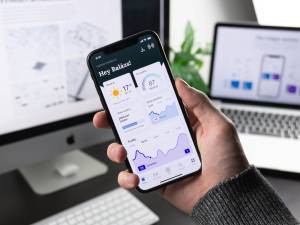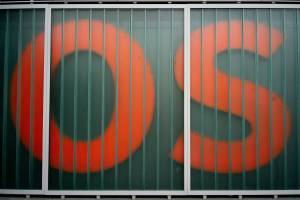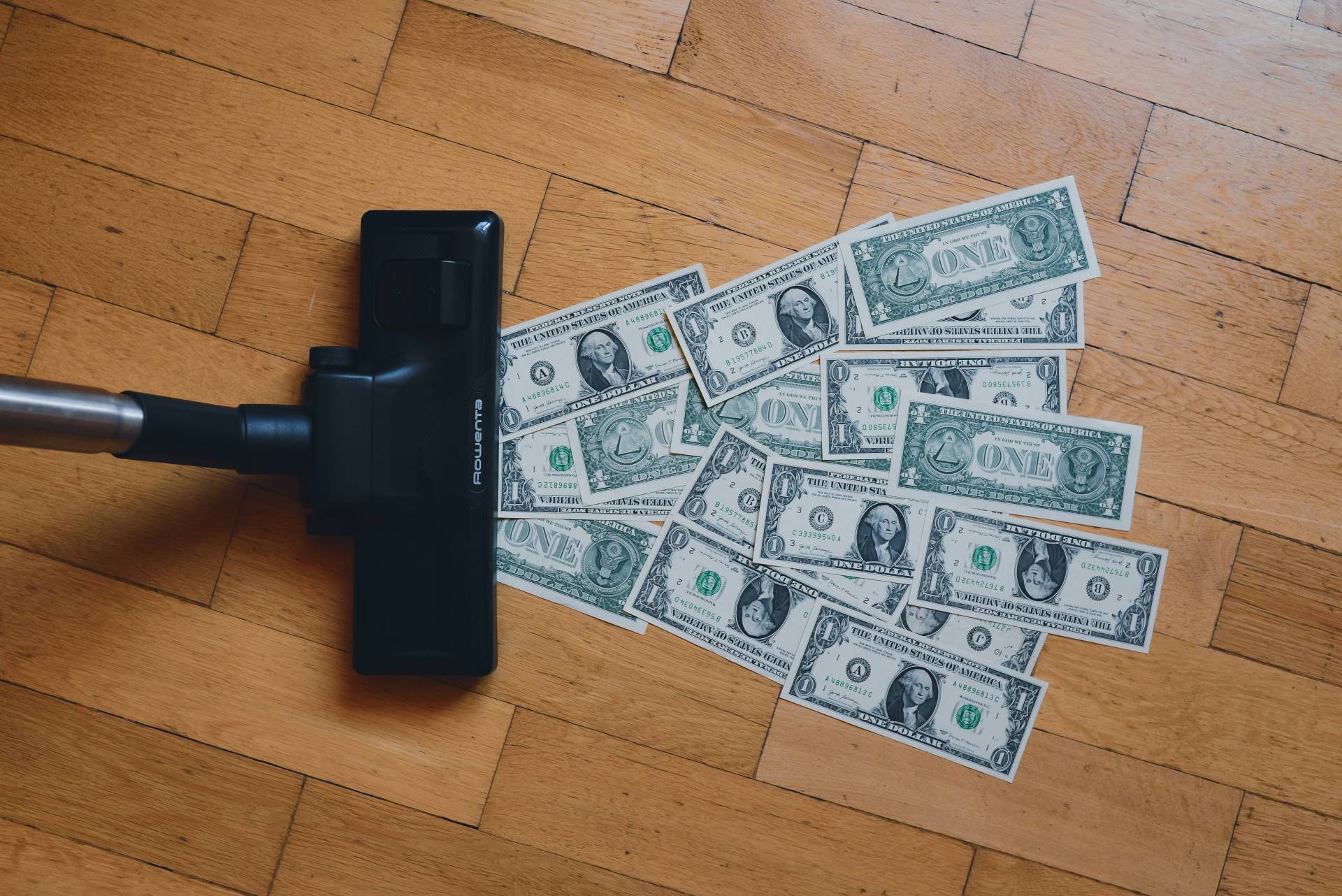App User Acquisition Cost, often abbreviated as UA Cost, is the total expense a company incurs to acquire a single user for their mobile application. In simpler terms, it’s the cost associated with convincing someone to download and install your app on their device. Understanding and calculating this metric is crucial for app developers and marketers to assess the efficiency of their user acquisition strategies. In this article, we’ll delve into the concept of App User Acquisition Cost and how to calculate it effectively.
What is App User Acquisition Cost?
App User Acquisition Cost, commonly referred to as UA Cost, is a vital metric in the world of mobile app development and marketing. It represents the amount of money a company spends to acquire a single user who downloads and installs their mobile application. In essence, it’s the cost associated with convincing someone to become a user of your app.
Understanding UA Cost is essential because it provides valuable insights into the effectiveness of your user acquisition strategies. By calculating this metric, app developers and marketers can evaluate the efficiency of their campaigns, allocate budgets wisely, and make informed decisions to optimize user acquisition efforts.
UA Cost encompasses various expenses, including advertising costs, marketing campaigns, promotions, incentives, and other expenditures aimed at attracting new users to your app. It’s an integral part of measuring the overall return on investment (ROI) for your mobile app marketing initiatives.
As we delve deeper into this topic, we will explore how to calculate UA Cost and discuss strategies to manage and optimize it effectively, ensuring a cost-efficient and successful user acquisition process for your mobile app.
Importance of App User Acquisition Cost in Mobile Apps

Understanding the significance of App User Acquisition Cost (UA Cost) is crucial for mobile app developers and marketers. This metric plays a pivotal role in several aspects of app management and can significantly impact the success of your mobile application. Here’s why UA Cost is so important:
- Budget Allocation: UA Cost helps you allocate your marketing budget wisely. By knowing how much it costs to acquire a user, you can allocate resources to the most effective channels and campaigns, ensuring that your budget is spent efficiently.
- ROI Evaluation: Calculating UA Cost allows you to measure the return on investment for your user acquisition efforts. It helps you determine whether the revenue generated by new users justifies the expenses incurred in acquiring them.
- Campaign Optimization: UA Cost helps you assess the performance of different marketing channels and campaigns. You can identify which strategies are the most cost-effective and focus your efforts on those that yield the best results.
- Profitability Analysis: Knowing your UA Cost is essential for assessing the profitability of your app. It enables you to gauge whether your app’s monetization strategies can cover the acquisition expenses and generate a profit.
- Scaling Strategies: As your app grows, you may want to scale your user acquisition efforts. Understanding UA Cost allows you to estimate how much additional budget you’ll need to acquire a larger user base.
- Competitive Edge: Being aware of your UA Cost compared to competitors can give you a competitive edge. If you can acquire users more efficiently, you can potentially outperform competitors in terms of user growth and profitability.
- User Quality: UA Cost can also provide insights into the quality of acquired users. Lower UA Cost doesn’t necessarily mean better users. Analyzing other metrics in conjunction with UA Cost helps in assessing user quality.
- Continuous Improvement: Regularly monitoring UA Cost helps you identify trends and make data-driven decisions. It allows you to adapt and refine your user acquisition strategies over time.
In summary, UA Cost is a fundamental metric for app developers and marketers, helping them make informed decisions, manage budgets effectively, and optimize user acquisition efforts. By understanding the importance of UA Cost, you can enhance the overall performance and profitability of your mobile app.
Key Metrics in Calculating App User Acquisition Cost
To calculate App User Acquisition Cost (UA Cost) accurately, several key metrics come into play. These metrics provide the necessary data to determine how much it costs to acquire a new user for your mobile app. Here are the essential metrics involved in UA Cost calculations:
- Marketing Expenses: This includes the total amount spent on marketing and advertising campaigns to promote your app. It covers costs associated with various channels such as social media advertising, search engine marketing (SEM), influencer partnerships, and more.
- Number of New Users: You need to know how many new users you’ve acquired during a specific period. This metric represents the success of your user acquisition efforts.
- Campaign Attribution: To attribute users to specific campaigns or channels, you’ll need tracking mechanisms like UTM parameters or mobile attribution tools. This allows you to link acquired users to the respective marketing sources.
- Time Frame: UA Cost calculations are typically performed for a specific time frame, such as a month or a quarter. This helps in assessing the short-term and long-term effectiveness of your user acquisition strategies.
The formula for calculating UA Cost is relatively straightforward:
UA Cost = Total Marketing Expenses / Number of New Users Acquired
For example, if you spent $10,000 on marketing and acquired 1,000 new users in a month, your UA Cost would be:
UA Cost = $10,000 / 1,000 = $10 per user
It’s important to note that UA Cost can vary across different marketing channels and campaigns. Therefore, it’s beneficial to calculate UA Cost for each channel or campaign separately to identify which ones are the most cost-effective.
Additionally, consider tracking and analyzing other relevant metrics like Customer Lifetime Value (CLV), Retention Rate, and Average Revenue Per User (ARPU) alongside UA Cost to gain a comprehensive view of your app’s user acquisition and profitability.
In the next sections, we’ll explore strategies to manage and optimize UA Cost effectively, ensuring a successful user acquisition process for your mobile app.
App User Acquisition Costs by Operating System (OS)

Understanding how App User Acquisition Costs (UA Costs) vary by operating system (OS) is valuable for app developers and marketers. UA Costs can fluctuate based on several factors, and it’s essential to consider these variations when planning your user acquisition strategies. Here are some key considerations regarding UA Costs by OS:
- iOS vs. Android: Historically, UA Costs have often been higher for iOS compared to Android. This is partly due to the demographics of iOS users, who tend to have higher disposable income. Advertisers often compete more aggressively to target iOS users.
- Android Fragmentation: The Android ecosystem is more fragmented, with various device manufacturers and OS versions in circulation. This fragmentation can impact UA Costs, as targeting specific segments within the Android user base may require more precise and diverse marketing strategies.
- Region-Specific Variations: UA Costs can vary significantly by region. For example, targeting users in North America or Western Europe might result in higher costs compared to emerging markets in Asia or Africa.
- App Category: The type of app and its category can influence UA Costs. Apps in highly competitive categories, such as gaming or finance, may face steeper acquisition costs due to increased competition.
- Seasonal Variations: UA Costs can also fluctuate seasonally. For instance, costs might rise during holidays when many advertisers are running campaigns.
- Algorithm Changes: Changes in app store algorithms or ad platform policies can impact UA Costs. Advertisers may need to adapt their strategies to navigate such changes effectively.
- Ad Platforms: The choice of ad platforms (e.g., Facebook Ads, Google Ads, Apple Search Ads) can affect UA Costs. Different platforms have varying costs per acquisition based on their user base and ad inventory.
To obtain precise UA Cost data for your specific app and OS, it’s crucial to regularly monitor and analyze your marketing campaigns. This data-driven approach allows you to adjust your strategies, allocate budgets efficiently, and optimize user acquisition efforts based on real-time performance.
Keep in mind that UA Cost trends can evolve over time, so it’s advisable to consult industry reports and data sources for the most up-to-date information on UA Costs by OS.
App User Acquisition Costs by Region

App User Acquisition Costs (UA Costs) can vary significantly based on the geographic region you are targeting. Understanding these regional variations is essential for optimizing your user acquisition strategies and effectively allocating your marketing budget. Here are some key considerations regarding UA Costs by region:
- North America: The United States and Canada often have some of the highest UA Costs globally, particularly for iOS users. Competition for user attention is fierce, and advertising expenses reflect this. However, the region also offers a large and potentially lucrative user base.
- Europe: Western European countries like the United Kingdom, Germany, and France generally have higher UA Costs, similar to North America. Eastern and Southern European countries may have lower costs but potentially smaller user bases.
- Asia: Asia is a diverse market with varying UA Costs. Countries like Japan and South Korea can have high UA Costs, while other Asian markets, such as India and Southeast Asia, may offer lower acquisition expenses. Mobile adoption and internet usage patterns play a significant role in these differences.
- Latin America: UA Costs in Latin America tend to be lower than in North America and Europe. However, user behavior and preferences can vary widely across countries within the region, so targeting strategies should consider these nuances.
- Africa: Some African markets have lower UA Costs due to emerging mobile app ecosystems. However, factors like infrastructure limitations and device diversity should be taken into account when entering these markets.
- Middle East: The Middle East, particularly countries with high smartphone penetration like the United Arab Emirates and Saudi Arabia, can have competitive UA Costs. Targeting affluent users in this region may result in higher expenses.
- Australia and New Zealand: These countries often have UA Costs similar to those in North America and Western Europe. However, they offer a smaller but relatively affluent user base.
- Emerging Markets: Emerging markets in Asia, Africa, and Latin America may present cost-effective opportunities for user acquisition. Still, marketers should be aware of unique challenges and adapt their strategies accordingly.
It’s crucial to conduct thorough market research and analyze historical UA Cost data to tailor your acquisition strategies to each region effectively. Additionally, consider factors like user engagement, retention rates, and lifetime value when evaluating the overall value of users acquired in specific regions.
By understanding UA Costs by region, you can make informed decisions about where to focus your marketing efforts and budget, ultimately optimizing your app’s user acquisition performance.
App User Acquisition Costs by Vertical
User Acquisition Costs (UA Costs) for mobile apps can vary significantly across different industry verticals or app categories. Understanding these variations is essential for app developers and marketers, as it can influence budget allocation and overall acquisition strategies. Here’s an overview of UA Costs by vertical:
- Gaming: The gaming industry is known for having some of the highest UA Costs. Acquiring users for mobile games, especially competitive and high-quality titles, can be expensive. Costs can vary depending on the subgenre, with hyper-casual games generally having lower UA Costs than complex, multiplayer titles.
- Finance and Fintech: Apps in the finance and fintech vertical often face high UA Costs due to the competitive nature of the industry. Acquiring users for banking, investment, or payment apps requires substantial marketing budgets.
- E-commerce: User acquisition for e-commerce apps can also be competitive, especially during peak shopping seasons. UA Costs may vary based on the type of products sold, with niche markets potentially offering more cost-effective acquisition opportunities.
- Health and Fitness: Health and fitness apps have seen increased demand, and UA Costs can be moderate to high, depending on the app’s features and target audience. The growth of wearables and health-conscious consumers has contributed to this trend.
- Travel and Hospitality: UA Costs in the travel and hospitality sector can fluctuate seasonally. Prominent travel apps may invest heavily in marketing during peak travel seasons, increasing acquisition expenses.
- Education and E-Learning: The cost of acquiring users for education and e-learning apps can vary. It may depend on factors like the type of courses offered, the app’s reputation, and the target audience’s educational needs.
- Social Networking: Social networking apps often have lower UA Costs, as users are more likely to discover and download them organically or through referrals. However, competition among social apps can still impact UA Costs.
- Food Delivery and Dining: Apps in the food delivery and dining vertical can face moderate to high UA Costs, driven by competition among delivery platforms and the demand for convenience.
- Entertainment and Streaming: Streaming services and entertainment apps may require substantial marketing budgets to acquire users. The type of content offered and exclusivity can influence acquisition costs.
- Productivity and Utilities: Apps in this category may have moderate UA Costs. Users often search for specific solutions to enhance productivity or address specific needs, making them more receptive to targeted marketing.
- News and Information: UA Costs for news and information apps can vary. Quality content, personalized recommendations, and user engagement strategies can impact acquisition expenses.
- Utilities and Tools: Simple utility apps, such as file managers or QR code scanners, may have lower UA Costs. These apps often serve niche user needs.
It’s essential to conduct industry-specific research and competitor analysis to gain insights into UA Costs within your chosen vertical. Additionally, consider factors like user retention, engagement, and monetization potential when evaluating the overall value of users acquired in a particular app category. This holistic approach will help you make informed decisions about your user acquisition strategies and budget allocation.
App User Acquisition Cost by Social Channels
When it comes to acquiring users for your mobile app, the choice of social channels for marketing can significantly impact User Acquisition Costs (UA Costs). Different social media platforms offer varying costs per acquisition, audience demographics, and advertising capabilities. Here’s a breakdown of UA Costs by social channels:
- Facebook: Facebook Ads provide a versatile platform for user acquisition. UA Costs on Facebook can vary widely based on factors like targeting options, competition, and ad format. Overall, Facebook tends to offer competitive UA Costs and a broad user base.
- Instagram: Instagram, owned by Facebook, is known for its visually appealing ad formats. UA Costs on Instagram may be slightly higher than on Facebook due to its younger, visually-oriented user base.
- Twitter: Twitter offers opportunities for app promotion through sponsored tweets and other ad formats. UA Costs on Twitter can vary depending on the targeting criteria, trending topics, and ad creative quality.
- LinkedIn: LinkedIn is a valuable platform for B2B app promotion. UA Costs on LinkedIn are often higher than on other platforms due to its professional user base. However, the quality of leads may justify the expenses for certain business-focused apps.
- Pinterest: Pinterest is a visual discovery platform that can be effective for apps with visually appealing content. UA Costs on Pinterest may be moderate, and it can be particularly valuable for e-commerce and lifestyle apps.
- Snapchat: Snapchat offers a younger user base and unique ad formats. UA Costs on Snapchat can vary but are generally competitive, making it suitable for apps targeting younger audiences.
- TikTok: TikTok is known for its viral potential and creative opportunities. UA Costs on TikTok can be competitive, but the platform’s unique engagement makes it appealing for certain app categories.
- YouTube: YouTube Ads can reach a vast audience through video content. UA Costs on YouTube may vary based on ad format, audience targeting, and competition within your niche.
- Reddit: Reddit has a diverse and engaged user base. UA Costs on Reddit can be moderate, and the platform may work well for niche apps targeting specific communities.
- Other Social Channels: Consider emerging platforms and niche social networks relevant to your app’s target audience. These platforms may offer cost-effective user acquisition opportunities.
To optimize your UA Costs on social channels, conduct thorough audience research, A/B testing, and performance analysis. Tailor your ad creative and messaging to resonate with each platform’s unique user base. Additionally, regularly monitor your campaigns, adjust budgets, and refine targeting to maximize the value of acquired users.
Conclusion
Understanding App User Acquisition Costs (UA Costs) is a critical aspect of developing a successful mobile app marketing strategy. Here’s a recap of key takeaways:
- UA Costs Definition: App User Acquisition Cost refers to the expenses incurred to acquire a new user for your mobile app through various marketing channels and strategies.
- Importance of UA Costs: Monitoring and managing UA Costs is essential to ensure your app’s growth is sustainable and profitable. Balancing acquisition expenses with user lifetime value is crucial.
- Key Metrics: Analyzing metrics such as Cost Per Install (CPI), Cost Per Acquisition (CPA), and Return on Ad Spend (ROAS) helps in evaluating the efficiency of your acquisition campaigns.
- Operating System and Region Variations: UA Costs can vary significantly by the user’s operating system and geographic region. Consider these variations when planning your marketing efforts.
- Vertical-Specific Considerations: The type of app you’re promoting also influences UA Costs. Different industry verticals have distinct acquisition challenges and costs.
- Social Channel Selection: Choosing the right social media platforms for advertising plays a crucial role in UA Costs. Each platform has unique demographics and costs associated with user acquisition.
In conclusion, successful user acquisition involves a data-driven approach, continuous optimization, and adaptation to market trends. By carefully managing your UA Costs and tailoring your strategies to your app’s specific audience and goals, you can maximize the return on your marketing investment and foster sustainable app growth.
Frequently Asked Questions
1. How much does it cost to acquire app users?
The cost to acquire app users varies. It depends on the app’s market, advertising strategies, and target audience. Costs can range from a few cents to several dollars per user.
2. What is the customer acquisition cost of an application?
Customer acquisition cost (CAC) for an application is the total cost spent on acquiring new customers divided by the number of customers acquired. This includes marketing and advertising expenses.
3. What is the cost of acquisition users?
The cost of acquiring users, or CAC, is the expense involved in convincing potential customers to download and use an app. It includes marketing and promotional costs.
4. What is app user acquisition?
App user acquisition is the process of attracting and converting new users to an application. It involves marketing strategies and campaigns to increase app downloads and user engagement.
5. What is the average user acquisition cost for Fintech?
The average user acquisition cost for Fintech apps varies. Factors like competition, target market, and marketing channels affect the cost. It can range from $1 to $25 or more per user.
6. What is the customer acquisition cost for TikTok?
The customer acquisition cost for TikTok is not publicly disclosed. It depends on factors like advertising campaigns, target demographics, and the geographic location of the users.
7. What is the average CAC on Instagram?
The average CAC on Instagram varies based on the industry, target audience, and ad effectiveness. Costs can range widely, from a few dollars to much higher figures per customer.
8. What is customer acquisition cost for social media?
Customer acquisition cost for social media depends on the platform, ad type, and target audience. Costs can vary, with some campaigns costing a few dollars per customer, while others may be more expensive.
9. Why is customer acquisition so expensive?
Customer acquisition can be expensive due to high competition, marketing costs, and the need for continuous engagement strategies. Factors like target market, ad quality, and customer value also influence the cost.
Featured Image Credit: Photo by rc.xyz NFT gallery; Unsplash – Thank you!













